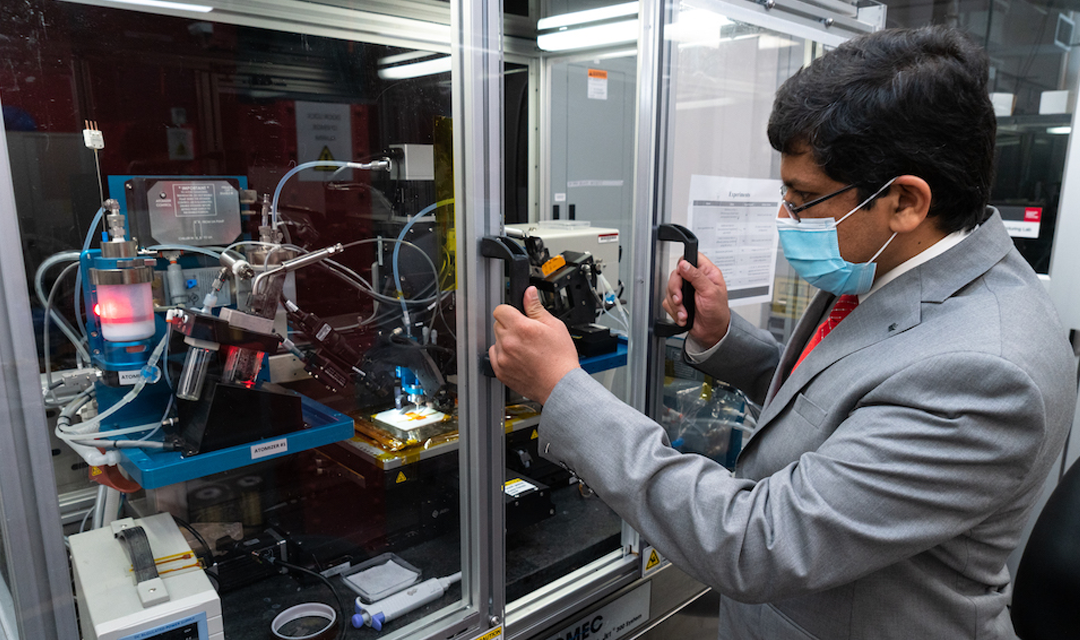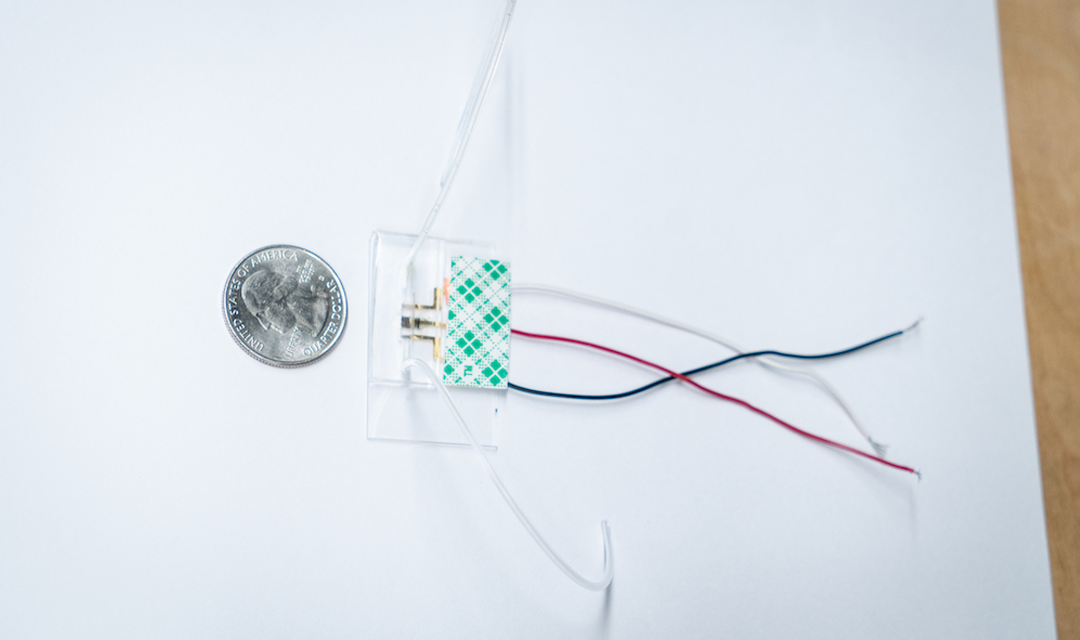Carnegie Mellon University (CMU) researchers have 3D printed a sensor that can identify Covid-19 antibodies in around 10 seconds. Produced using additive manufacturing systems supplier Optomec’s patented Aerosol Jet Printing (AJP) process, the technology could enable clinicians to instantly, and accurately, detect if somebody is infected with the coronavirus.
Rahul Panat, associate professor of mechanical engineering at CMU, headed up the team that developed the 3D printed sensor.
“My research team was working on 3D printed high-performance sensors to detect dopamine, a chemical in the brain, when we realized that we could adapt our work for Covid-19 testing,” he said. “We shifted our research to apply our expertise to combatting this devastating pandemic. The Aerosol Jet process was critical to producing a sensor with high sensitivity and speed.”

Optomec’s Aerosol Jet process
Although commercialized by Optomec, the AJP process was originally born out of a DARPA-funded Mesoscale Integrated Conformal Electronics (MICE) project in the late 1990s. The project investigated manufacturing processes able to deposit a variety of materials onto virtually any substrate.
In its current form, AJP is capable of producing materials with features as fine as 10 microns, which possess highly precise conductive and non-conductive properties. The process sees the formation of structures using small ink-like droplets of metals that can adhere to readymade surfaces. Some of the applications AJP is utilized within include electronics, aerospace, medical device manufacturing, sensors, and more.
Optomec’s AJP technology has been used by several firms to manufacture high-resolution electronic circuits and devices, like strain sensors, wireless Bluetooth transceivers, and small digital-to-analog converter chips.
At the tail-end of last year, Optomec announced the delivery of its 500th 3D printer, of which some 300 consist of AJP systems.

The sensor
To create the sensor, the researchers used AJP to precisely and rapidly print ink droplets containing nanoparticles to produce tiny gold electrode pillars, which were then coated with reduced graphene oxide. This rough coating allows the Covid antibodies to bind onto the electrodes.
Due to the specific geometry and surface characteristics of the 3D printed structure, clinicians were able to instantly and accurately detect the Covid-19 antibodies from a tiny drop of blood. Even at extremely low concentrations, two antibodies of the virus could be identified through an electrochemical reaction detected by the sensor within the handheld microfluidic device. The results were then sent immediately to a smartphone, available within 10-15 seconds. The researchers are also investigating how this platform can facilitate the detection of the virus while it is active, in addition to its antibodies.
The low-cost sensor, which is about the size of a U.S. quarter, has a provisional patent. The device can also be cleaned very quickly, allowing multiple successive readings and ultimately speeding up the testing process.
The researchers believe this test could not only play a key role in understanding the path and concentration of the Covid-19 pandemic, but could also potentially help to detect other viruses such as Zika, Ebola, and HIV.
Nominations for the 2020 3D Printing Industry Awards are still open, let us know who is leading the industry now.
The fourth edition of the 3D Printing Industry Awards Trophy Design Competition is now underway. Enter your design for the chance to win a CraftBot Flow 3D printer.
To stay up to date with the latest 3D printing news, don’t forget to subscribe to the 3D Printing Industry newsletter or follow us on Twitter or liking our page on Facebook.
Are you looking for a job in the additive manufacturing industry? Visit 3D Printing Jobs for a selection of roles in the industry.
Featured image shows the interface with a mobile phone which provides the results of the antibody test. Image via College of Engineering/Carnegie Mellon University.



